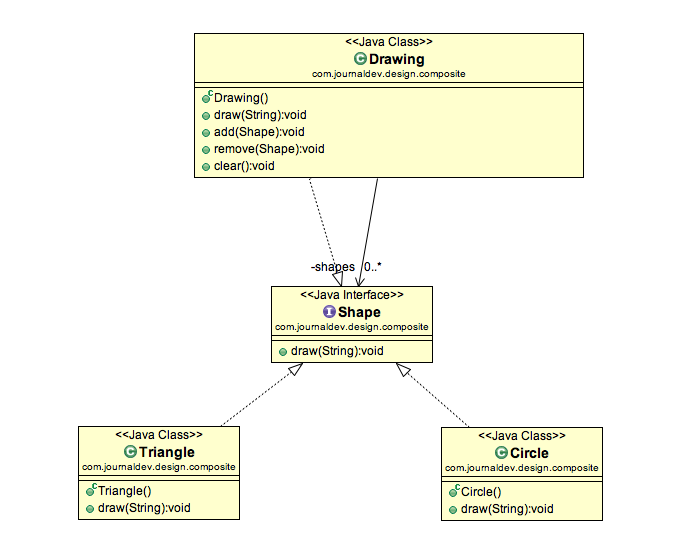Table Of Content

To master the Factory Design Pattern in Java, it's beneficial to collaborate with seasoned professionals. Saigon Technology, with its expertise in Java development, provides robust solutions that can help streamline your software development process. It uses the accountType to create the corresponding type of BankAccount.
Structural Software Design Patterns in Java
Clean code practices, on the other hand, are about making the code as clear, simple, and readable as possible. This includes practices like choosing descriptive names, keeping functions and classes small, and using comments sparingly and effectively. The SOLID principles are a set of five principles for designing software that is easy to manage and maintain.
Design Patterns in Java Tutorial
The Builder pattern separates the construction of a complex object from its representation, allowing the same construction process to create different representations. It is useful when dealing with objects that have many optional or required parameters. The Singleton pattern ensures that a class has only one instance and provides a global point of access to it.
Decorator Pattern: Adding Flair
They include principles like Single Responsibility, Open-Closed, and Liskov Substitution, which all aim to make software more understandable, flexible, and maintainable. It also encapsulates state-specific behavior and divides the behavior of a class. However, the State pattern can be overkill if a state machine has only a few states or rarely changes. The Composite pattern is great for representing part-whole hierarchies. However, it can make design overly general and harder to restrict components.
State Method is a Behavioral Design Pattern, it allows an object to alter its behavior when its internal state changes. Buy the eBook Dive Into Design Patterns and get the access to archive with dozens of detailed examples that can be opened right in your IDE. The example also shows how Builder produces products of different kinds (car manual) using the same building steps. This pattern is used to capture and externalize the internal state of an object so that the object can be restored to that state later. Since we have these algorithms, within our system we can use each of these to recommend based on the strategy we decide.
In conclusion, while design patterns in Java are powerful tools, they must be used judiciously and appropriately. Understanding the potential issues and how to avoid them will help you use design patterns more effectively in your Java projects. The Singleton pattern has several advantages, such as controlled access to the sole instance, reduced namespace, and the ability to permit a variable number of instances. However, it can be difficult to unit test due to its global access nature, and it may mask bad design, such as not defining proper objects for the job. The Observer pattern defines a one-to-many dependency between objects so that when one object changes state, all its dependents are notified and updated automatically.
Reset Password
Behavioral patterns provide a solution for better interaction between objects and how to provide loose-coupling and flexibility to extend easily. Lets you fit more objects into the available amount of RAM by sharing common parts of state between multiple objects instead of keeping all of the data in each object. Lets you compose objects into tree structures and then work with these structures as if they were individual objects. Render Props offer a unique way to achieve customization in React components. They allow you to pass down rendering logic as a prop to a component, giving the consuming component control over how its data is displayed. This pattern is particularly useful when you have a generic component that needs to be adaptable to different data formats or presentation styles.
As you can see, the creation of objects in the method create(AccountType type) depends on the constructor of the sub-classes. Therefore, if the constructor has many parameters, the factory method can become complex. There are different groups of design patterns in software design which we talked about “Behavioral patterns”. This pattern is trying to separate the algorithm from the object structure on which it operates. It allows you to add new operations or behaviors to a class hierarchy without modifying the existing classes.
You should favor composition over inheritance in Java. Here's why. - Oracle
You should favor composition over inheritance in Java. Here's why..
Posted: Thu, 14 Jul 2022 07:00:00 GMT [source]
It's useful when you want to use an existing class with an incompatible interface. Also known as the Wrapper Pattern, the Adapter Pattern allows objects with incompatible interfaces to collaborate. It is named after the object that joins these unrelated interfaces, which is called an adapter. The adapter object takes calls for one object and transforms them to a format and interface recognizable by the second object. The rest of this programming tutorial will provide an overview of the Creational patterns; other patterns will be added here at a later date.
With the help of a visitor pattern, we can move the operational logic from the objects to another class. An observer design pattern is useful when you are interested in the state of an Object and want to get notified whenever there is any change. In the observer pattern, the Object that watches the state of another Object is called observer, and the Object that is being watched is called subject. String pool implementation in Java is one of the best examples of flyweight pattern implementation.
The Adapter pattern allows the interface of an existing class to be used as another interface. J2EE Patterns are concerned about providing solutions regarding Java EE. These patterns are widely accepted by other frameworks and projects, like for an example Spring. The Flyweight pattern uses sharing to support large numbers of fine-grained objects efficiently, reducing memory usage and object creation overhead.

No comments:
Post a Comment